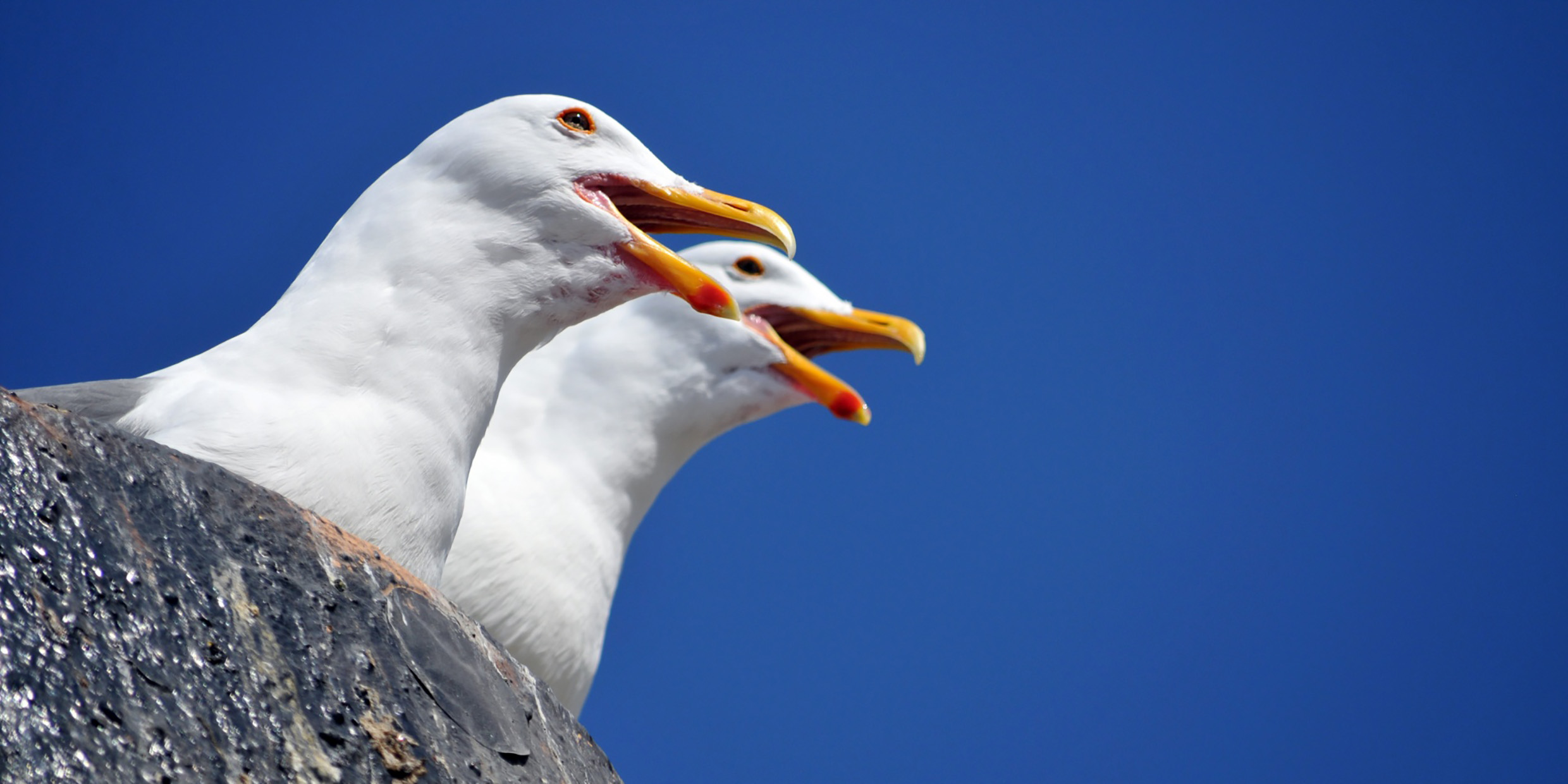Originally published 18 January 1988
It is time to present the First Annual Gullible Gull Award for the most bizarre scientific research of the past year involving experimentation with animals — experiments that Shakespeare might call “wondrous strange.”
May I have the envelope, please.
And the winner is — Karen McComb of the Department of Zoology, Cambridge University, for her paper “Roaring by red deer stags advances the date of oestrus in hinds,” published in the Dec. 23 [1987] issue of Nature.
But before I tell you about McComb’s experiment, let me tell you how the Gullible Gull Award got its name.
Back in 1967, Neal Griffith Smith of the Smithsonian Institution reported in Scientific American on a series of remarkable experiments with gulls. The problem that attracted Smith’s attention was this: Some species of gulls that live together look very nearly alike, and yet do not interbreed. How is it that gulls of one species recognize others of their own kind?
For example, at one site on the eastern coast of Baffin Island, in the Canadian Arctic, four species of gulls inhabit the same breeding area without interbreeding. The only visual differences between the species are the color of the eyes and the fleshy rings around the eyes, and slight variations in the shading of the back and wings. These subtle differences are easily recognized by ornithologists. Are they equally important to the gulls?
To test the significance of visual cues for species isolation, Smith captured hundreds of gulls by lacing bait with drugs. Once the birds had been rendered immobile, Smith painted their eye rings. Gulls with light-colored eye rings were painted dark, and vice versa. As a control, other groups of birds were drugged but not painted, or drugged and painted with their own color. Still others, of course, were neither drugged or painted.
The result: Eye-ring color (or contrast) did make a difference in several interesting ways. For example, females chose mates that looked like themselves. Light-eyed females chose light-eyed males, and ignored birds of their own species that had their eye rings painted dark. In a word, gulls are gullible.
Imprinting suspected
The question, then, was how do the female gulls know the color of their own eyes? Smith’s conclusion: Since mirrors are generally absent on the cliffs of Baffin Island, female gulls must “imprint” on their parents soon after birth, and thereafter seek a mate with eyes like mom and dad. And so do the species remain distinct.
I have named the Gullible Gull Award to honor this imaginative zoologist, who traveled the Arctic by dog sled and kayak, with paint box and drug capsules, bringing the light of science to bear upon the sex lives of birds.
And now for our winner, zoologist McComb, who showed similarly inspired attentions to the sex lives of deer.
No dog-sleds or kayaks were necessary for these experiments. McComb did her work on a red deer farm in New Zealand. During the autumn rut (April, down under), red deer stags defend their harems by vigorous roaring, big-time roaring, typically two roars a minute for 24 hours a day.
OK, so we all know that males of many species roar to intimidate other males. But red deer stags also roar when no other males are present, and especially when a new hind joins the harem. Why? Could the roaring have some effect on the female reproductive cycle that would increase the mating success of the male?
A curious love song
To test this hypothesis, McComb divided her female deer into three experimental groups. For 14 days before being placed with fertile stags the three groups received different “treatments.”
One group of females — the crucial one in terms of the goal of the experiment — was exposed to recorded roaring played back through loudspeakers, one to three roars per minute day and night, surely one of the most curious “love songs” ever put on tape.
To determine the effect of roaring combined with other male behaviors or odors, a vasectomized male was placed with the second group. The third group was isolated from both males and roaring for the entire treatment period.
And sure enough, at the end of the 14 days, when the rut began, the hinds exposed to recorded roaring conceived more quickly (as determined by calving time) than the control group that had been exposed to neither roars nor males. The group that shared a roaring, vasectomized stag was the quickest of all to conceive.
If recorded roaring advances ovulation date, then natural selection should favor stags that roar, for this will increase the possibility that a stag will successfully mate a hind before losing her to another male. Concludes McComb: The reproductive benefits of roaring could be substantial.
“I will roar,” says Shakespeare’s Bottom, “that I will do any man’s heart good.” With the help of some high-tech audio equipment, zoologist McComb has demonstrated that roaring affects the “hearts” of creatures other than men.
And so, for our winner, how about a round of applause now?



